Family Hyalellidae Rank Species | Higher classification Hyalella | |
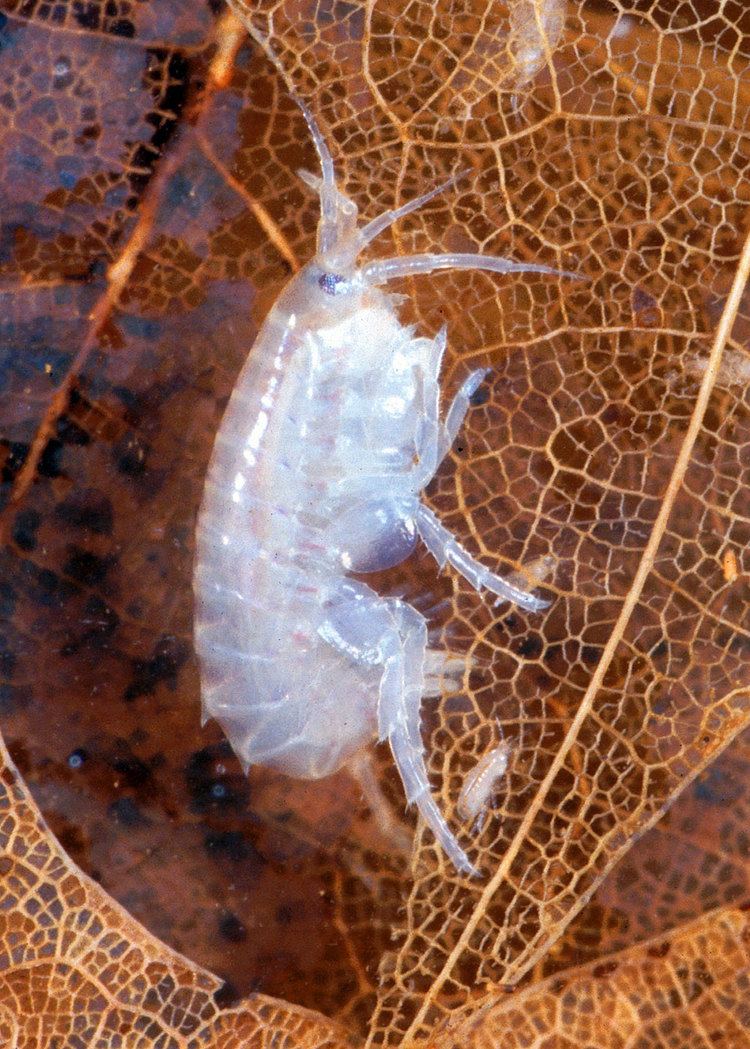 | ||
Similar Hyalella, Amphipoda, Caridina breviata, Palaemonetes paludosus, Pseudosesarma moeschi | ||
Hyalella azteca breeding tank
Hyalella azteca is a widespread and abundant species of amphipod crustacean in North America. It reaches 3–8 mm (0.12–0.31 in) long, and is found in a range of fresh and brackish waters. It feeds on algae and diatoms and is a major food of waterfowl.
Contents
- Hyalella azteca breeding tank
- Hyalella azteca freshwater gammarus www aquazone gr
- Description
- Distribution
- Ecology
- Life cycle
- Uses
- Taxonomic history
- References
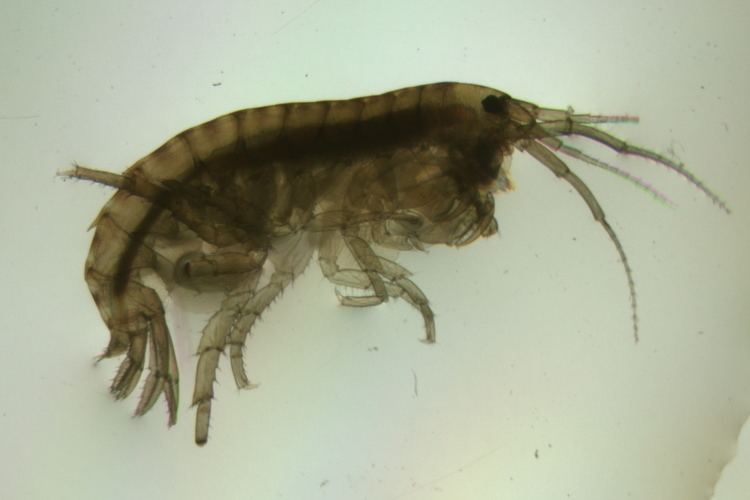
Hyalella azteca freshwater gammarus www aquazone gr
Description
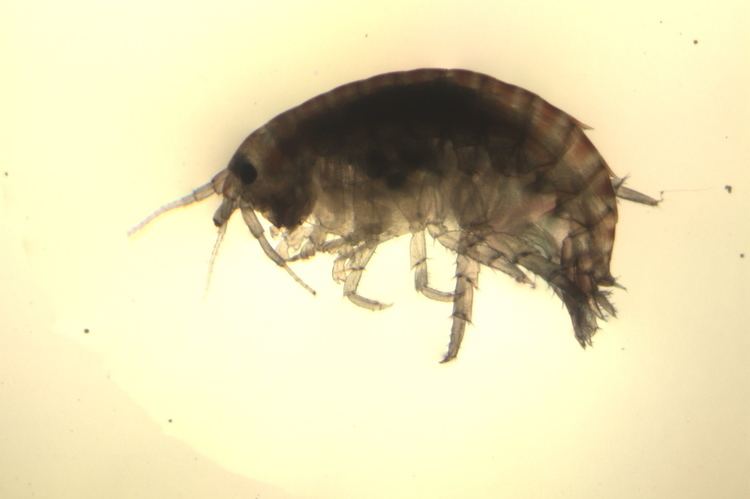
Hyalella azteca grows to a length of 3–8 millimetres (0.12–0.31 in), with males being larger than females. Their colour is variable, but the most frequent hues are white, green and brown.
Distribution
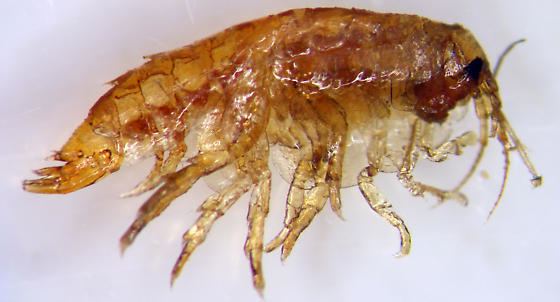
Hyalella azteca is found across Central America, the Caribbean and North America, as far north as the Arctic tree line. It lives among vegetation in permanent bodies of freshwater, including lakes and rivers, extending into tidal fresh water, and freshwater barrier lagoons. It is "the most abundant amphipod of lakes [in North America]".
Ecology
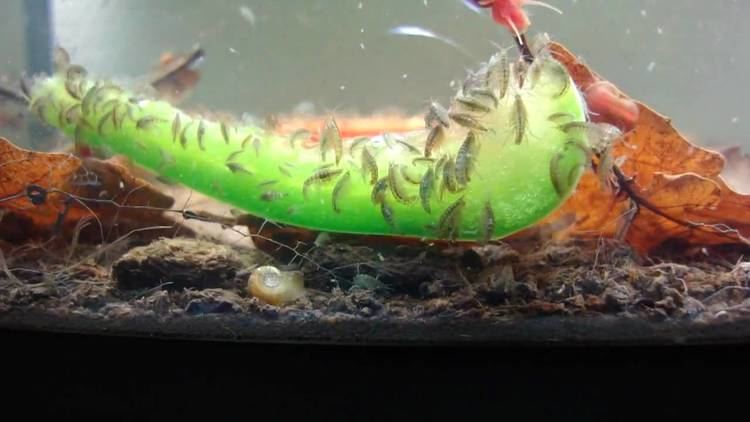
In contrast to other species of Hyalella, H. azteca is extremely common and has wide ecological tolerances. It can tolerate alkaline waters and brackish waters, but cannot tolerate a pH lower (more acidic) than 6.0.
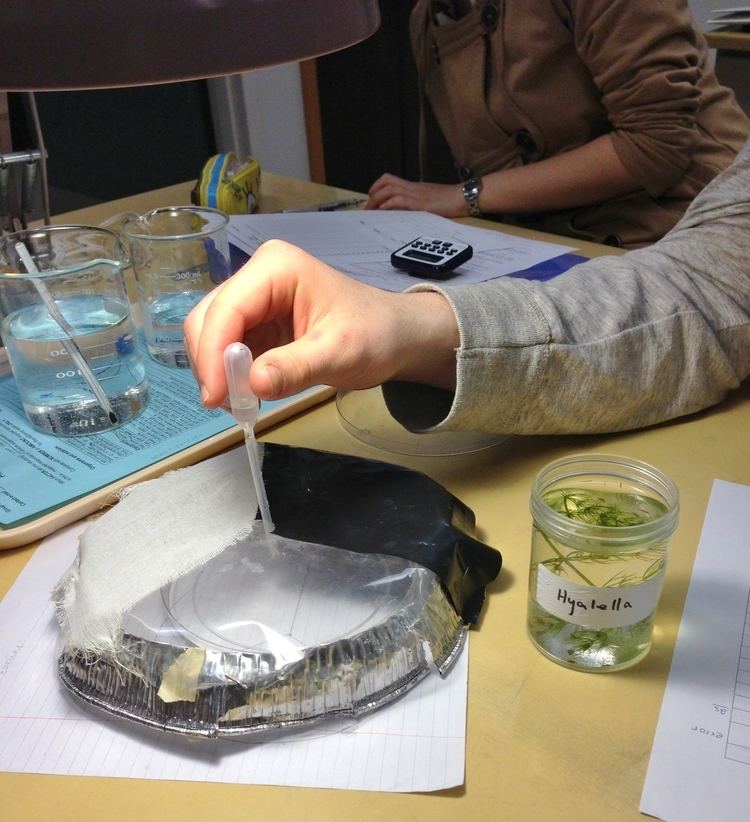
The main foodstuffs of H. azteca are filamentous algae and diatoms, although they may also consume organic detritus. It cannot assimilate either cellulose or lignin, even though these biomolecules are a major component of the leaf litter. It can, however, assimilate 60%–90% of the bacterial biomass that it ingests.

Hyalella azteca is an important food for many waterfowl. In Saskatchewan, 97% of the diet of female white-winged scoters was observed to be H. azteca, and it also makes up a significant part of the diet of lesser scaup.
Life cycle
Hyalella azteca passes through a minimum of nine instars during its development. Sexes can first be distinguished at the 6th instar, with the first mating occurring in the 8th instar. Subsequent instars, of which there may be 15–20, are considered adulthood.
Uses
Hyalella azteca is used in various aquatic bioassays.
Taxonomic history
Hyalella azteca was first described by Henri Louis Frédéric de Saussure in 1858, under the name Amphitoe aztecus, based on material collected by Aztecs from a "cistern" near Veracruz, Mexico. It has also been described under several junior synonyms, including:
When Sidney Irving Smith erected the genus Hyalella in 1874, H. azteca was the only included species, and therefore the type species. The genus now includes dozens of species, mostly in South America.
H. azteca is now thought to represent a species complex, since there is little gene flow between populations, and different morphotypes are known to coexist in some areas. Two local populations have been described as separate species – Hyalella texana from the Edwards Plateau of Texas, and Hyalella montezuma from Montezuma Well, Arizona.
